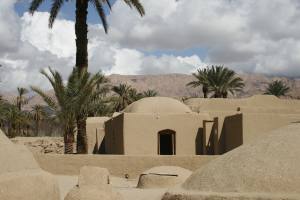Returning to Earth Architecture

News Detail

Source:
Aida ZareEarth architecture is the heritage of mankind for thousands of years. It has been spread in 5 continents and contains different cultural aspects and construction techniques. Earth buildings include a great variety of functions; from a simple adobe rural house to an astonishing palace or mosque.
After the Industrial Revolution earth material was rarely used and followed by architectural movements. However climate change and decreasing energy resources in the last decades cause thinking about sustainable solutions in architecture, and using green materials. This Leads to studies and learning more about earth architecture by academic and professional architectural circles, for its obvious ecological potential. Earth material is usually gained from local sources so they have low levels of embodied energy. They are completely recyclable, nontoxic, and according to their heat resistance characteristic, they can have an effective role in improving thermal comfort by moderating the temperature and humidity of indoor spaces. Hence researches on earthen case studies and buildings are followed seriously in these years.

Earth material can be used in constructing a full earth building, though it still challenges restrictive legislation and standards in many countries especially in seismic areas. It also can be applied in interior spaces for making earth floors, earth plasters, and etc. Earth competitions like “TerraFibra Award”, (https://www.terrafibraaward.com) show the tendency in this field and also increasing building with earth material in contemporary architecture.
The other usage of earth material is restoration and renovation of existing buildings. As mentioned this material has been used in a great diversity of structures all over the world and is a valuable heritage of humankind. Its cultural importance throughout the world is remarkable. The World Heritage Program on Earthen Architecture (WHEAP) aims for the improvement of the state of conservation and management of earthen architecture sites worldwide. (https://whc.unesco.org/en/earthen-architecture/ ).
Worthy case studies of earth architecture can be found in rural settlements, and vernacular architecture. They are made by indigenous people and as they have high interaction with nature due to their lifestyle, their habitats are usually constructed in harmony with nature. These case studies have occurred as a result of an organic growth that integrates the natural and built environment within a wide range of time. Studying the architectural identity of vernacular architecture is of paramount importance in terms of returning to Earth Architecture, because it could reveal the original and unique construction ideas that have been achieved from nature during centuries.
Aghazadeh House – Share Your Green Design
